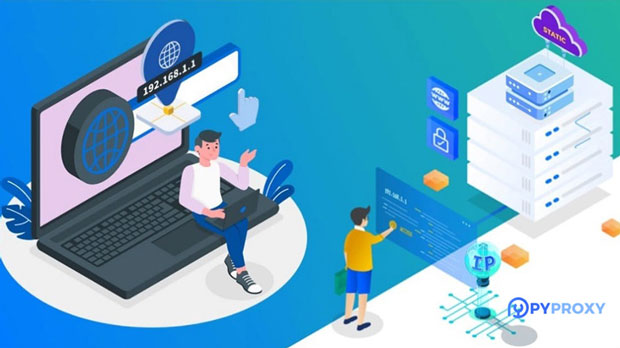Shadowsocks is a widely used tool for securing and anonymizing internet traffic. By leveraging proxy servers, it provides users with the ability to bypass restrictions and access content securely. One popular method of utilizing Shadowsocks is by incorporating socks5 proxies. While there are many premium options available, free SOCKS5 proxies can also be used within Shadowsocks for users who are looking for a cost-effective solution. In this article, we will explore how to configure Shadowsocks with a free socks5 proxy, the benefits and limitations of doing so, and some practical considerations to ensure a smooth and secure experience. What is a SOCKS5 Proxy?A SOCKS5 proxy is an advanced version of the SOCKS (Socket Secure) protocol that allows for the transmission of data through a proxy server, hiding the original IP address and providing additional privacy and security. It is commonly used for bypassing censorship, hiding geographic locations, and securing sensitive data. SOCKS5 provides better support for a range of protocols such as HTTP, FTP, and UDP compared to its predecessor SOCKS4. This flexibility makes SOCKS5 an ideal choice for internet users who need to mask their identity while accessing various online services.Understanding Shadowsocks and Its Role in Proxy ConfigurationShadowsocks is a secure and lightweight proxy tool designed to circumvent network restrictions. It encrypts and routes your internet traffic through a remote server, thus ensuring that sensitive information remains protected from surveillance and interference. The Shadowsocks protocol is highly effective for bypassing firewalls, accessing restricted content, and maintaining anonymity online.Shadowsocks typically uses a SOCKS5 proxy for routing internet traffic. The advantage of using SOCKS5 in Shadowsocks lies in its versatility and efficiency. By incorporating a SOCKS5 proxy, Shadowsocks users can encrypt their connection while masking their IP address, making it harder for third parties to track their online activity.Steps to Use free socks5 proxy in ShadowsocksNow, let’s dive into the specific steps for configuring a free SOCKS5 proxy within Shadowsocks. While there are several methods to set this up, the process can be broken down into simple stages.1. Install Shadowsocks Client: Before you begin, ensure that the Shadowsocks client is installed on your device. The installation process varies depending on the operating system, but the official client is available for Windows, macOS, Linux, and mobile platforms. Once you have installed the client, proceed to the next steps.2. Obtain a Free SOCKS5 Proxy: In order to use a SOCKS5 proxy, you must first obtain the necessary proxy information, such as the server address, port number, and credentials. Free SOCKS5 proxies are available through several online platforms, although these free options may come with certain limitations such as reduced speed or limited server locations.3. Configure Shadowsocks with the SOCKS5 Proxy: Open the Shadowsocks client and enter the configuration settings. You will need to input the socks5 proxy server details, including the IP address, port, and any authentication details that the proxy may require (such as a username and password). In some cases, the SOCKS5 proxy may require additional settings, such as encryption methods, which you will need to adjust according to the proxy’s specifications.4. Test the Connection: Once you have entered the configuration settings, click the “Save” or “Apply” button to finalize the setup. At this point, you should test the connection to ensure that the Shadowsocks client is working properly with the SOCKS5 proxy. You can verify the connection by visiting a website that shows your IP address or using an online tool to check if your traffic is being routed through the proxy.5. Adjust Settings as Needed: If you encounter any issues with the connection, review the settings to ensure that all the information is entered correctly. Additionally, you may want to try a different SOCKS5 proxy server if the current one is slow or unreliable. Free proxies often have a high level of user traffic, which can lead to slower speeds or even service interruptions.Benefits of Using Free SOCKS5 Proxies in ShadowsocksWhile free SOCKS5 proxies have their drawbacks, they can still offer several benefits, particularly for users who are on a budget or only require occasional access to anonymous browsing. Below are some of the key advantages of using free SOCKS5 proxies with Shadowsocks:1. Cost-Effective: The most obvious benefit of using a free SOCKS5 proxy is the cost savings. Users can access secure browsing and encrypted traffic routing without having to pay for a premium proxy service.2. Bypass Network Restrictions: Free SOCKS5 proxies in Shadowsocks can help bypass geo-blocked content, firewalls, and network restrictions, enabling access to websites and services that may otherwise be unavailable in certain regions.3. Enhanced Privacy: The SOCKS5 protocol offers improved privacy compared to other proxy types. By masking the user's IP address, it becomes much harder for third parties, such as hackers or ISPs, to track browsing activities.Limitations of Using Free SOCKS5 Proxies in ShadowsocksDespite the advantages, there are several limitations to be aware of when using free SOCKS5 proxies in Shadowsocks. These limitations can impact the overall user experience, particularly when it comes to speed, reliability, and security.1. Limited Bandwidth and Speed: Free SOCKS5 proxies are often shared among many users, which can result in slower connection speeds. This limitation can make browsing and streaming content a less enjoyable experience, especially if the proxy server is located far from the user.2. Unreliable Performance: Free proxies may suffer from downtime, which can cause interruptions in service. These outages can leave users without access to the proxy for extended periods of time, disrupting their internet experience.3. Security Risks: Free SOCKS5 proxies may not offer the same level of encryption and security as paid alternatives. In some cases, free proxies might be compromised by malicious actors or may log user data, compromising the privacy of users.Best Practices When Using Free SOCKS5 Proxies in ShadowsocksTo ensure a safe and effective experience while using a free SOCKS5 proxy with Shadowsocks, consider the following best practices:1. Use Trusted Sources: Always obtain SOCKS5 proxy information from reliable and trustworthy sources. Avoid using proxies from unknown or unverified providers, as they could be malicious or unreliable.2. Encrypt Traffic: While using free proxies, make sure your Shadowsocks configuration is set to encrypt your traffic. This will add an extra layer of security, protecting your data even if the proxy server is not fully secure.3. Regularly Change Proxies: Free SOCKS5 proxies can become overloaded or unreliable over time. Regularly switch between different proxies to maintain the best performance and avoid being impacted by slow speeds or service interruptions.4. Use a VPN for Additional Security: If security is a priority, consider using a VPN in conjunction with Shadowsocks and SOCKS5 proxies. This extra layer of encryption can enhance your privacy and protect your online activities from potential threats.ConclusionUsing a free SOCKS5 proxy in Shadowsocks is a viable option for users seeking secure and anonymous browsing without incurring additional costs. While there are several benefits, including privacy protection and access to restricted content, the limitations of free proxies—such as slower speeds, unreliable performance, and potential security risks—must be carefully considered. By following the steps outlined in this article and adhering to best practices, users can optimize their Shadowsocks setup and enjoy a more secure internet experience. However, for more consistent performance and higher levels of security, users might eventually find it worthwhile to invest in a paid proxy service.
Jan 16, 2025




























































